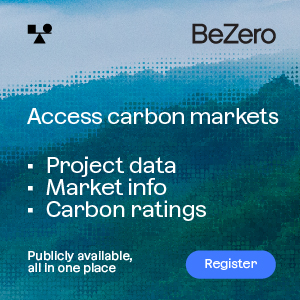By Chris Busch, Director of Research at California-based think-tank Energy Innovation
California has fortified its role as a global leader in climate policy with passage of Senate Bill (SB) 32 and Assembly Bill (AB) 197. On Sept. 8, Governor Jerry Brown signed these bills into law, establishing a new ceiling on emissions in 2030 under SB 32-40% below 1990 levels – and new rules guiding regulators on how to accomplish emission reductions.
While these new laws clearly demonstrate California’s unprecedented ambition to decarbonize its economy (more so than any other jurisdiction in the Western Hemisphere), SB32 and AB 197 also raise questions about their implications for California’s cap-and-trade system. As Ethan Elkind, director of the Climate Change and Business Program at the University of California contends, “the passage of AB 197 makes the future of the [cap-and-trade] program even more murky.” In fact, it is highly likely cap-and-trade, with some changes, will be enabled under SB 32 and AB 197.
AB 197 requires the California Air Resources Board (CARB) to prioritize local emissions reductions, and sets out a new analytical frame accounting for social costs, defined to include the impacts to public health and environmental risks, as well as energy system costs that are commonly included in cost-effectiveness measures. AB 197 states CARB shall prioritize direct emission reductions (specifying a particular reduction at a specific source) within California’s largest polluting sectors.
In a sense, these direct emission reductions are the mirror image of a cap-and-trade program, which establishes a market signal—the price of an allowance—and allows decentralized actors to respond flexibly using knowledge of their own facilities. Policy analysis will show that that cap-and-trade, with some modifications, helps overall program cost-effectiveness even when a broader social cost approach is used.
One change that would be required involves offsets— credits from emission reductions projects outside the sectors directly covered in California’s cap-and-trade program. So far, the majority of offsets have been sourced from outside of California.
The rationale for the inclusion of offsets as part of the cap-and-trade program has been the necessity of avoiding unacceptably high decarbonization costs. However, given consistently low allowance prices, it is hard to justify the lost co-benefits that come from sending money from California’s capped entities to fund out-of-state projects that generate offset credits. Low allowance prices are a signal California has not yet begun to exhaust the supply of in-state low-cost emission reduction investments.
A likely outcome under AB 197 is the introduction of new conditions before emitters in California would be offered these offsets as a compliance option. In this scenario, allowance prices would have to reach some price threshold much higher than the auction price floor before they would be allowed into the system.
SB 32 and AB 197 also leave unresolved questions surrounding auctioning authority after 2020. Even without auctioning, cap-and-trade can continue with free distribution of allowances. The best approach to this would be to distribute permits to people and provide them an easy mechanism to enter these into auctions—perhaps run by CARB, or perhaps by a third party—where polluters can acquire them from the public.
The prognosis for the planet just got measurably better with the adoption of SB 32 and AB 197. California has a bold new target and CARB has all the authority it needs to do the job.
On Thursday Sep. 22, California regulator ARB will hold a webcast public meeting to discuss these issues




